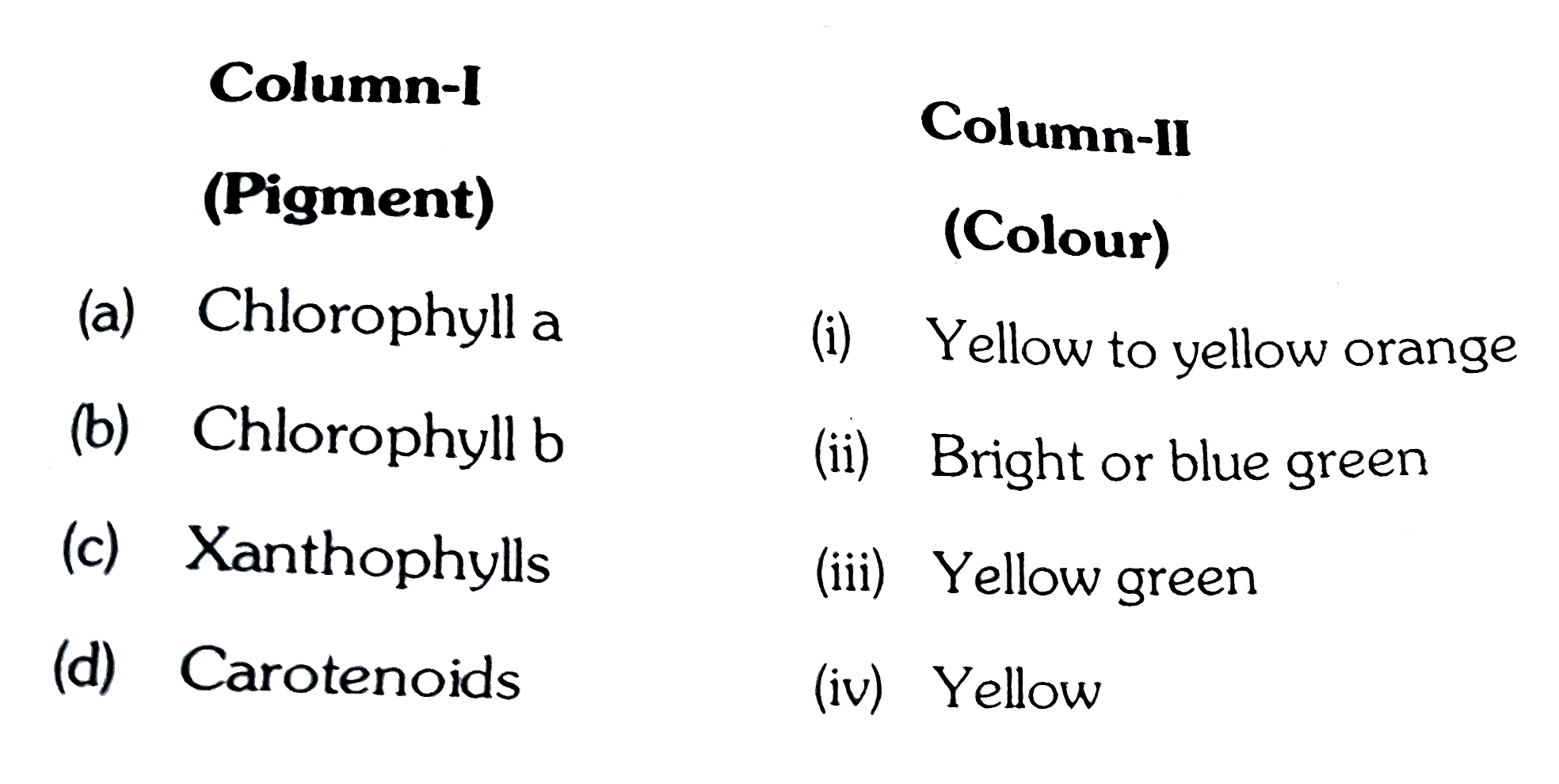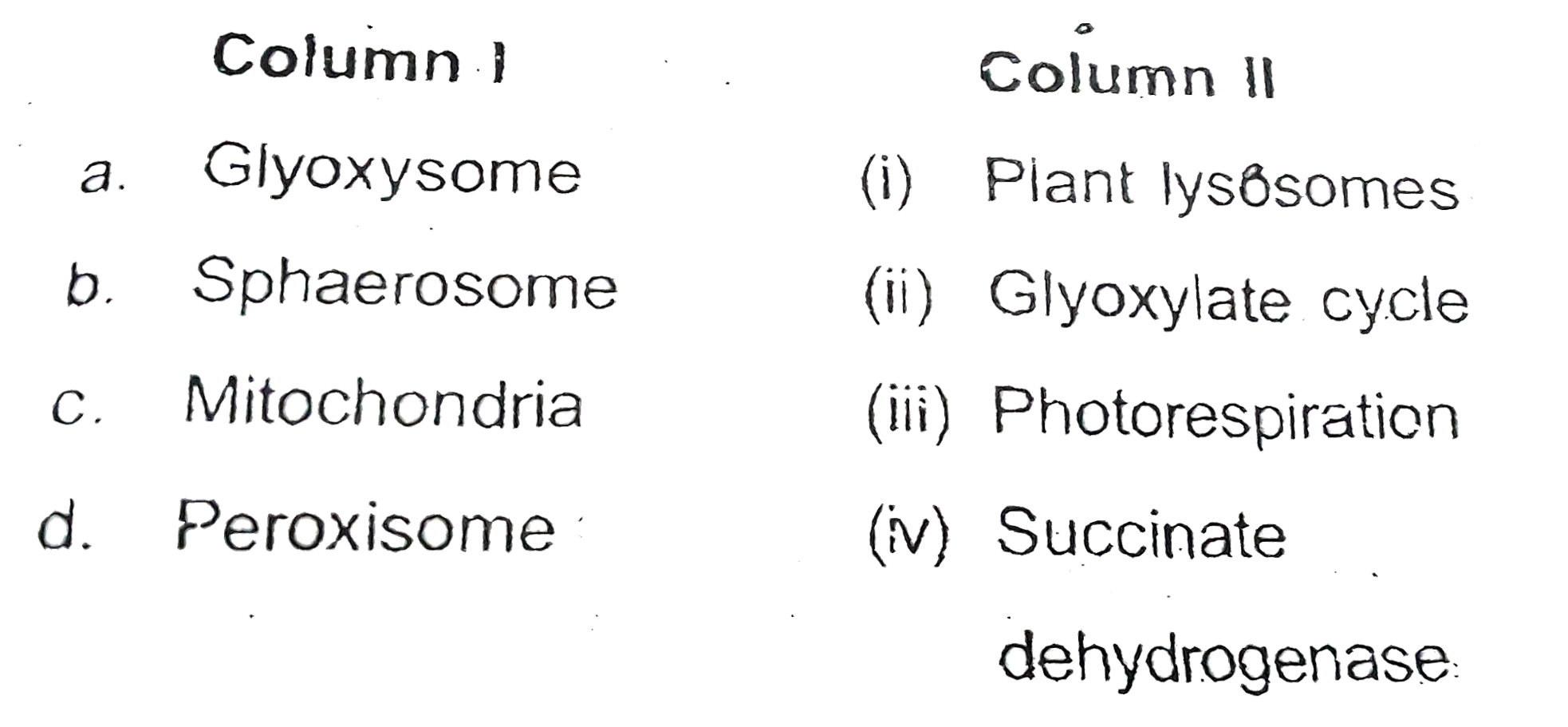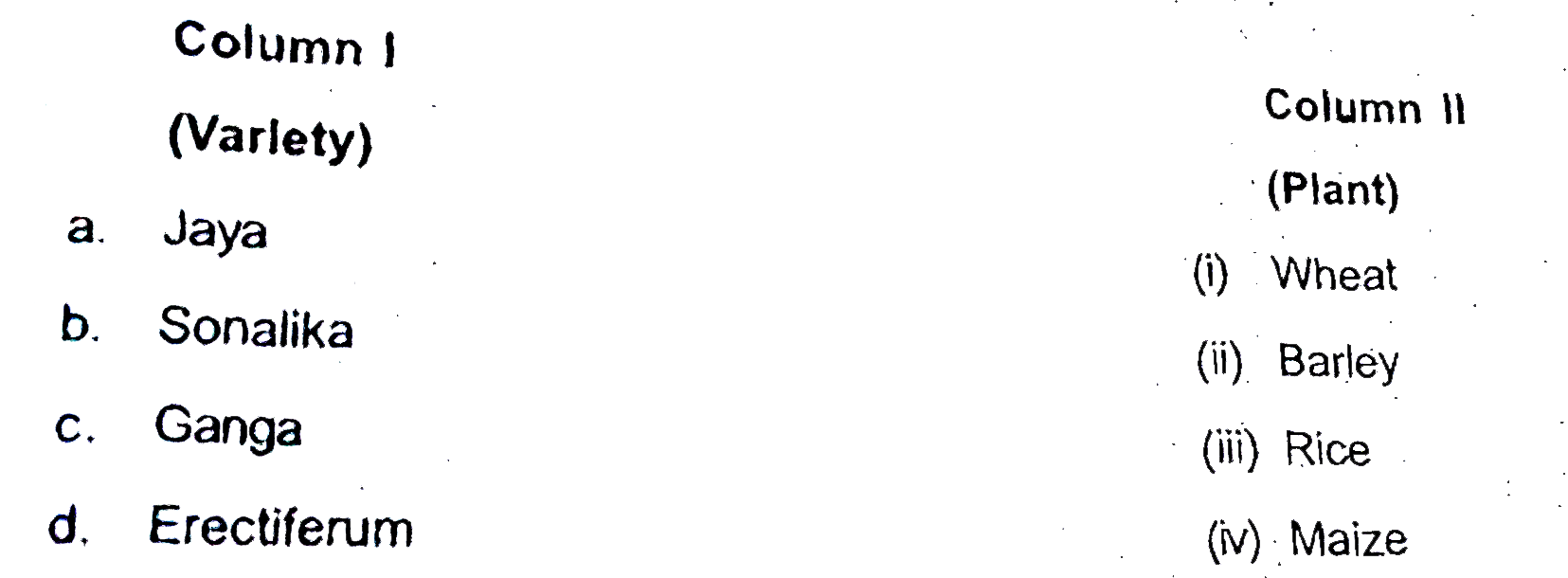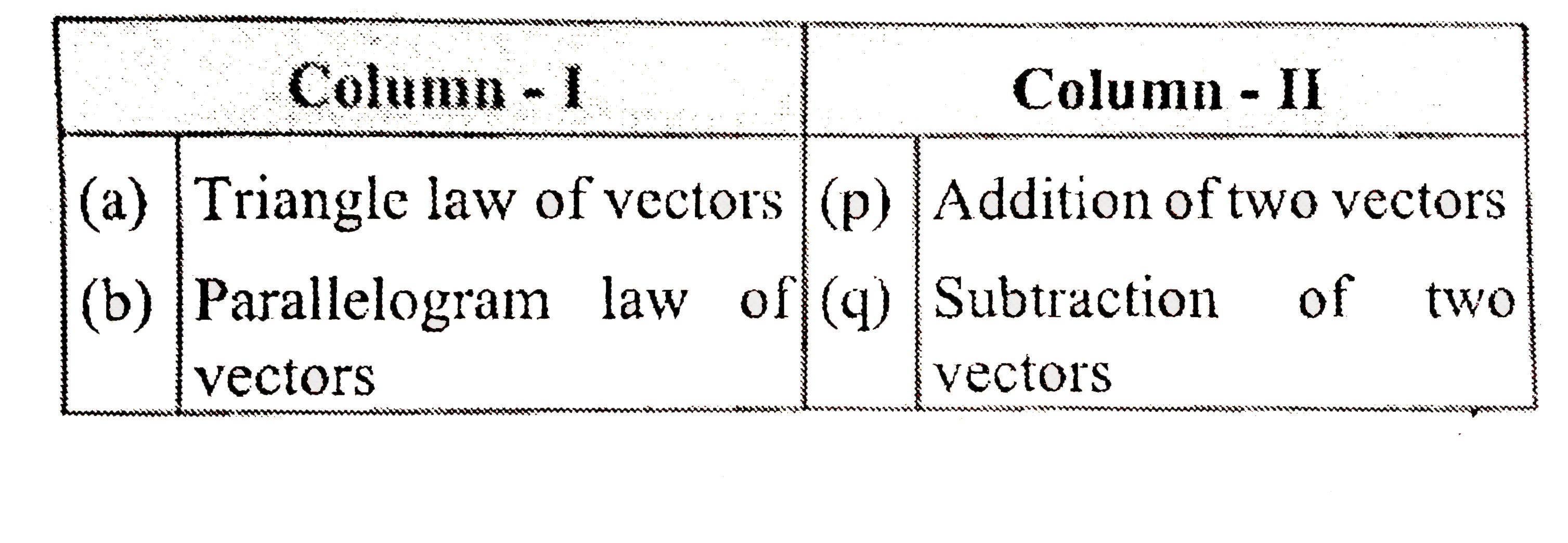match the following column. a. Zygomycetes(Column I) b.Ascomycetes(Column I) c. Oomycetes(Column I) d. Basidiomycetes(Column I) e. Deuteromycetes(Column I). (i) Algal fungi(Column II) (ii) club fungi(Column II) (iii) Fungi imperfecti(Column II) (iv) Sac fungi(Column II) (v) conjugation fungi(Column II).
a(v), b(ii), c(iv), d(iii), e(i)
a(v), b(ii), c(iii), d(ii), e(i)
a(v), b(iv), c(i), d(i), e(ii)
a(v), b(iv), c(ii), d(iii) , e(i)
The correct Answer is:C
To solve the matching question, we will go through each of the fungi types in Column I and match them with their corresponding descriptions in Column II.
1. Identify Zygomycetes:
- Zygomycetes are known as conjugation fungi because they reproduce sexually through a process called conjugation.
- Match: a. Zygomycetes → (v) conjugation fungi
2. Identify Ascomycetes:
- Ascomycetes are known as sac fungi because they produce spores in a sac-like structure called an ascus.
- Match: b. Ascomycetes → (iv) sac fungi
3. Identify Oomycetes:
- Oomycetes are often referred to as algal fungi due to their thallus-like structure and similarities to algae.
- Match: c. Oomycetes → (i) algal fungi
4. Identify Basidiomycetes:
- Basidiomycetes are commonly known as club fungi because they produce spores on a club-shaped structure called a basidium.
- Match: d. Basidiomycetes → (ii) club fungi
5. Identify Deuteromycetes:
- Deuteromycetes are referred to as fungi imperfecti because they do not have a known sexual reproduction stage.
- Match: e. Deuteromycetes → (iii) fungi imperfecti
Final Matches:
- a → (v) conjugation fungi
- b → (iv) sac fungi
- c → (i) algal fungi
- d → (ii) club fungi
- e → (iii) fungi imperfecti
- Zygomycetes are known as conjugation fungi because they reproduce sexually through a process called conjugation.
- Match: a. Zygomycetes → (v) conjugation fungi
- Ascomycetes are known as sac fungi because they produce spores in a sac-like structure called an ascus.
- Match: b. Ascomycetes → (iv) sac fungi
- Oomycetes are often referred to as algal fungi due to their thallus-like structure and similarities to algae.
- Match: c. Oomycetes → (i) algal fungi
- Basidiomycetes are commonly known as club fungi because they produce spores on a club-shaped structure called a basidium.
- Match: d. Basidiomycetes → (ii) club fungi
- Deuteromycetes are referred to as fungi imperfecti because they do not have a known sexual reproduction stage.
- Match: e. Deuteromycetes → (iii) fungi imperfecti
- a → (v) conjugation fungi
- b → (iv) sac fungi
- c → (i) algal fungi
- d → (ii) club fungi
- e → (iii) fungi imperfecti
Topper's Solved these Questions
Similar Questions
Knowledge Check
match the following column a. small pox (column I) b.German measles(column I) c.Mumps(column I) d.AIDS(column I) e. Polimyelitis (column I) . (i) paramyxo virus (column II) (ii) polio virus(column II) (iii) variola virus (column II) ( iv) Rubella virus(column II) (v) Retro virus(column II).
Aa(v), b(ii), c(iv), d(iii), e(i)Ba(i), b(ii), c(iii), d(iv) , e(v)Ca(iii), b(iv) , c(i), d(v) , e(ii)Da(v), b(iv), c(ii), d(iii), e(i)Match the column i with column II.
 AA-q,B-r, C-s,D-pBA-p, B-q, C-r, D-sCA-r, B-q, C-p, D-sDA-r, B-p, C-q, D-s
AA-q,B-r, C-s,D-pBA-p, B-q, C-r, D-sCA-r, B-q, C-p, D-sDA-r, B-p, C-q, D-sMatch the column I with column II.
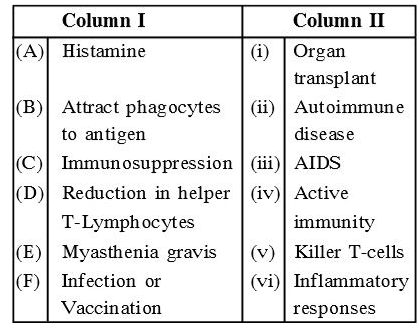 AÂ A - q, B - r, C - s, D - pBA - p, B - q, C- r, D - sCÂ A r, B - s, C - p, D- qDA -s, B - p, C-q, D - r
AÂ A - q, B - r, C - s, D - pBA - p, B - q, C- r, D - sCÂ A r, B - s, C - p, D- qDA -s, B - p, C-q, D - r


